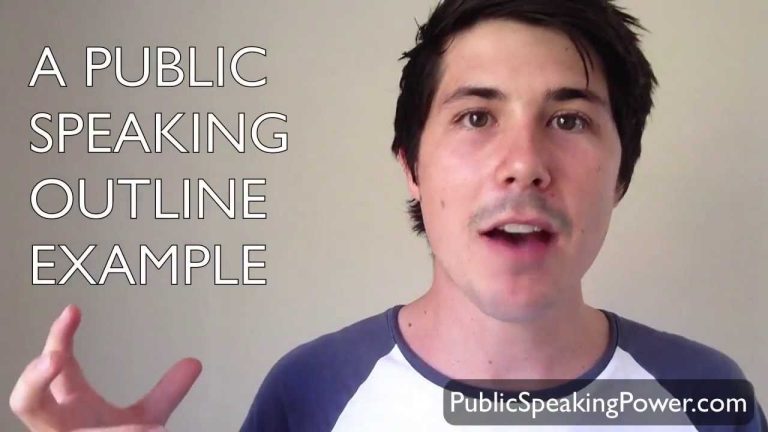Corporate Public Speaking
Welcome to the world of corporate public speaking! Whether you realize it or not, this skill is essential in today’s business landscape. It’s all about confidently presenting your ideas, captivating your audience, and delivering a powerful message that leaves a lasting impact.
But hey, don’t worry! Corporate public speaking doesn’t have to be intimidating or boring. In fact, it can be an exciting opportunity to showcase your expertise, connect with others, and boost your career. So, get ready to dive in, because we’re about to uncover the secrets to becoming a persuasive and charismatic communicator.
Throughout this article, we’ll explore the art of corporate public speaking, from conquering nerves to captivating your audience and everything in between. So, let’s get started on this exciting journey of becoming a confident and influential speaker in the corporate world!

The Art of Corporate Public Speaking: Engage, Inform, and Inspire
Public speaking is a vital skill in the corporate world, allowing professionals to effectively communicate ideas, motivate teams, and represent their organizations with confidence. Whether it’s presenting a proposal, delivering a keynote address, or participating in a panel discussion, corporate public speaking requires finesse and preparation. In this article, we will delve into the nuances of corporate public speaking, providing valuable insights, tips, and techniques to help individuals excel in this important aspect of their professional lives.
The Power of a Compelling Opening
The opening moments of a corporate speech can make or break an audience’s engagement. To captivate your listeners from the start, consider using a shocking statistic, a thought-provoking question, or an inspiring anecdote that directly relates to your topic. By establishing a connection with your audience and piquing their curiosity, you set the stage for a memorable and impactful speech.
Next, clearly state the purpose of your speech. What do you aim to achieve? Identify the key messages you want to convey and the main takeaways for your audience. By setting clear expectations and aligning your content with your desired outcomes, you create a roadmap that will guide both you and your listeners throughout the presentation.
Finally, consider incorporating multimedia elements into your opening. A visually compelling slide, a short video clip, or an interactive activity can grab attention and set a dynamic tone for your speech. These creative elements not only enhance engagement but also provide a fresh perspective that complements your verbal delivery.
Mastering Nonverbal Communication
While words carry significant weight in public speaking, nonverbal cues play an equally important role in effectively conveying your message. Your body language, facial expressions, and tone of voice can either enhance or detract from the impact of your words. Here are some tips to master nonverbal communication in corporate public speaking:
First and foremost, maintain eye contact with your audience. This simple act establishes trust, shows confidence, and helps forge a connection. Additionally, pay attention to your posture. Stand tall, with shoulders back and head held high, projecting an image of authority and credibility.
Gestures can also enhance your message. Use open, confident gestures that are synchronized with your words. However, be mindful of excessive movement, as it can become distracting. Instead, focus on purposeful movements that enhance key points or transitions in your speech.
Furthermore, leverage your voice for maximum impact. Vary your tone, pitch, and volume to convey emotions and engage your audience. Use pauses strategically to create anticipation or emphasize important information. Finally, be mindful of your pace. Speak clearly and at a moderate pace to ensure your words are easily understood and absorbed by your listeners.
Overcoming Stage Fright and Nervousness
Stage fright is a common challenge that many individuals face when it comes to public speaking. However, with proper preparation and techniques, it’s possible to overcome nervousness and deliver a confident speech. Here are some strategies to help you conquer your stage fright:
Prepare extensively by rehearsing your speech multiple times. Familiarize yourself with the content, flow, and timing. By being well-prepared, you will gain confidence in your knowledge and delivery, easing anxiety.
Visualize success. Prior to your speech, take a few moments to envision yourself delivering a successful presentation. Imagine the positive responses from your audience, the feeling of accomplished delivery, and the sense of satisfaction that comes with a well-received speech. Visualizing success can help alleviate anxiety and instill a positive mindset.
Practice deep breathing exercises to calm your nerves. When you feel anxious, take a moment to inhale deeply through your nose and exhale slowly through your mouth. This technique lowers your heart rate and relaxes your body, allowing you to regain control and focus.
Seek opportunities for public speaking practice. Join local Toastmasters clubs, corporate speaking programs, or public speaking workshops. These platforms provide a safe environment to practice, receive feedback, and improve your speaking skills.
Remember, nervousness is natural, and even experienced speakers have moments of anxiety. Embrace the adrenaline and channel it into positive energy. By acknowledging your nerves and reinterpreting them as excitement, you can transform your stage fright into a powerful force that fuels your performance.
Tapping into the Power of Storytelling
Storytelling is a timeless art that has the ability to captivate audiences and convey complex ideas in a relatable and memorable manner. In the realm of corporate public speaking, storytelling is a powerful tool that allows speakers to create emotional connections, illustrate key points, and leave a lasting impact on their listeners.
Benefits of Storytelling in Corporate Public Speaking
1. Emotional Connection: Stories have the power to evoke emotions, making your message more relatable and engaging for your audience. When you share personal anecdotes or narratives that resonate with your listeners, you create a memorable experience and build a stronger connection.
2. Retention and Comprehension: Stories are easier to remember than a series of facts or figures. By presenting information in a narrative format, you increase the likelihood that your audience will remember and understand the key points long after the speech has ended.
3. Illustrating Complex Ideas: Storytelling allows you to simplify complex concepts by breaking them down into relatable situations or characters. By using metaphors, analogies, or real-life examples, you can make abstract ideas more concrete and accessible to your audience.
Tips for Effective Storytelling in Corporate Public Speaking
1. Choose Relevant and Engaging Stories: Select stories that are directly related to your topic and resonate with your audience. Consider anecdotes from your own experiences, industry-related success stories, or case studies that illustrate the points you want to convey.
2. Craft a Compelling Narrative: Structure your storytelling in a way that has a clear beginning, middle, and end. Introduce the characters, set the context, present the conflict or challenge, and finally, reveal the resolution or lesson learned. This narrative arc helps build anticipation and creates a satisfying storytelling experience.
3. Use Vivid Language and Descriptions: Paint a picture with your words. Use descriptive language, vivid imagery, and sensory details to transport your audience into the story. Engage their senses and create a more immersive experience that will hold their attention and enhance their connection to the message.
4. Link Stories to Key Messages: Ensure that each story you share serves a purpose and aligns with your main messages. Clearly articulate the insights or lessons derived from the story, and bridge them back to your overall topic or theme. This will reinforce the relevance and impact of your storytelling.
5. Practice Timing and Delivery: Pay attention to the timing and pacing of your storytelling. Practice the delivery to ensure the story flows smoothly and the emotional beats land effectively. Consider using vocal variation, pauses, and gestures to enhance the impact of the story and keep your audience engaged.
Incorporating storytelling into your corporate public speaking repertoire can elevate your presentations to new heights. By tapping into the power of narrative, you can create a compelling and memorable experience for your listeners, leaving a lasting impact long after you’ve stepped off the stage.
Key Elements of Visual Aids in Corporate Presentations
Visual aids are an essential component of corporate presentations as they enhance audience understanding, improve retention, and add an interactive element. When used effectively, visuals can complement your spoken message, engage your audience, and help convey complex information more efficiently.
The Purpose of Visual Aids
Visual aids serve several purposes in a corporate presentation:
1. Enhance Comprehension: Visuals can provide a clear visual representation of data, concepts, or processes, making them easier for the audience to understand and internalize. They help simplify complex information, ensuring that your audience grasps the main points of your presentation.
2. Increase Retention: Research shows that people are more likely to remember information when it is presented visually. Visual aids can reinforce your message and improve audience recall by creating a visual anchor for the information you’re sharing. They make your presentation more memorable and impactful.
3. Improve Engagement: Visuals add variety and interactivity to your presentation, capturing and holding your audience’s attention. They break the monotony of a purely verbal delivery and provide visual interest and stimulation. Well-designed visuals can enhance the overall experience and keep your audience engaged throughout the presentation.
Choosing the Right Visual Aid
When selecting visual aids for your corporate presentation, consider the type of information you need to convey and the goals of your speech. Here are some popular visual aids to consider:
1. Slides: PowerPoint or similar presentation software can be a powerful tool for creating visually appealing slides. Use a simple and clean design, with legible fonts and colors that are easy on the eyes. Incorporate relevant images, charts, graphs, or diagrams to enhance understanding and support your key points.
2. Infographics: Infographics are a visually appealing way to present complex information, statistics, or processes. They combine graphics, icons, and text to create a visually engaging and easily digestible representation of your content. Platforms like Canva or Piktochart offer user-friendly templates for creating captivating infographics.
3. Videos and Animations: Videos and animations can be highly effective in conveying information, particularly when demonstrating a process, showcasing a product, or telling a story. Use short, well-produced videos that align with your message and resonate with your audience.
4. Props and Demonstrations: Depending on the nature of your presentation, you may consider incorporating props or demonstrations to add a hands-on element. These tangible visual aids can create a memorable and interactive experience for your audience.
Remember, the visual aids you choose should enhance and support your message, rather than distract or overwhelm your audience. Use them sparingly and strategically, ensuring they complement your spoken words and facilitate understanding.
The Role of Authenticity in Corporate Public Speaking
Authenticity is a key ingredient in successful corporate public speaking. When a speaker comes across as genuine, relatable, and true to themselves, they build trust, establish credibility, and connect on a deeper level with their audience. In this section, we will explore how authenticity can enhance your public speaking skills and leave a lasting impact.
The Power of Authenticity
1. Building Trust: Authenticity builds trust as it signals sincerity and transparency. By being genuine and true to yourself, you create an environment where your audience feels comfortable and more receptive to your message.
2. Establishing Credibility: Authenticity establishes credibility by showcasing your expertise, integrity, and genuine passion for the subject matter. When your audience senses your authenticity, they are more likely to value and respect your insights and recommendations.
3. Connecting Emotionally: Authenticity allows you to connect emotionally with your audience. By sharing personal stories, experiences, or vulnerabilities, you create a relatable and human connection that resonates deeply with your listeners. This emotional connection enhances engagement and leaves a lasting impact.
Tips for Cultivating Authenticity
1. Know Yourself: Before stepping onto the stage, take the time to reflect on your values, passions, and experiences. Understand what motivates and drives you. By knowing yourself intimately, you can align your message and delivery with your authentic self.
2. Be Vulnerable: Authenticity often requires vulnerability. Share personal stories, challenges, or lessons learned that highlight your humanity. This vulnerability creates a safe space for your audience to connect with your message and opens the door for meaningful engagement.
3. Practice Active Listening: Active listening is a crucial aspect of authenticity. Pay genuine attention to your audience’s needs, concerns, and questions. Respond thoughtfully and respectfully, demonstrating that you value and genuinely care about their perspectives.
4. Embrace Imperfection: Authenticity is not about being flawless or infallible. Embrace imperfections and mistakes, as they showcase your humility and commitment to growth. Your authenticity shines through when you acknowledge and learn from setbacks.
5. Be Present: Stay fully present in the moment and engage with your audience in a genuine and attentive manner. Connect with individuals by making eye contact, acknowledging their contributions, and truly listening to their feedback.
Remember, authenticity is a journey, and it takes time to cultivate. Be patient with yourself and allow your unique voice to shine through. Embrace vulnerability, stay true to your values, and always strive to connect with your audience on a deeper level. When you speak from an authentic place, your words will resonate and leave a lasting impact.
Key Takeaways:
- Corporate public speaking is an important skill for professionals in the business world.
- Effective public speaking can help in building confidence and credibility in front of an audience.
- Preparing and practicing your speech beforehand is crucial for success in corporate public speaking.
- Engaging with the audience and using storytelling techniques can make your speech more impactful.
- Using visual aids and body language can enhance your communication during a corporate public speaking event.
Frequently Asked Questions
Welcome to our Frequently Asked Questions section on corporate public speaking! Below, we have compiled some common inquiries about this topic to help you navigate the world of public speaking in a corporate setting. Whether you’re a seasoned professional or just starting out, we hope these answers provide valuable insights and guidance.
1. How can I overcome nervousness when speaking in front of a corporate audience?
Public speaking anxiety is a common challenge, but there are strategies you can use to overcome nervousness. Firstly, preparation is key. Practice your speech or presentation multiple times to build confidence and familiarity with the material. Additionally, deep breathing exercises and visualization techniques can help calm your nerves before taking the stage. Remember, it’s normal to feel nervous, but by embracing the nerves and focusing on delivering your message, you can overcome them and deliver a successful presentation.
Another helpful tip is to engage with your audience. Make eye contact, smile, and interact with individuals during your speech. This connection can create a supportive atmosphere and help you feel more at ease. Lastly, remember that mistakes happen, and they are a part of the learning process. Embrace the opportunity to grow and improve with each speaking engagement.
2. What are some effective techniques to capture and maintain the attention of a corporate audience?
Captivating a corporate audience requires engaging techniques and a well-structured presentation. One effective way to capture attention is to start with a compelling opening. This could include a thought-provoking question, a relevant anecdote, or a surprising statistic. By immediately drawing in your audience, you create intrigue and establish credibility.
In addition, using visual aids such as PowerPoint slides or props can enhance audience engagement. Visuals not only provide a visual cue but also help reinforce your message and keep the audience focused. Another technique is to incorporate storytelling throughout your presentation. Sharing personal experiences or relatable stories creates an emotional connection and keeps the audience interested in what you have to say.
3. How can I effectively convey complex ideas to a non-technical corporate audience?
When presenting complex ideas to a non-technical audience, it’s crucial to simplify the content and avoid jargon. Start by breaking down the concepts into digestible pieces and using everyday language. Use relatable examples or analogies to illustrate the main points and help your audience grasp the concepts more easily.
Visuals are another valuable tool in simplifying complex ideas. Incorporate diagrams, charts, or infographics to visually represent the information and make it more accessible. Additionally, interactive elements such as group activities or Q&A sessions can help facilitate understanding and clarify any confusion. By focusing on clarity, simplicity, and engagement, you can effectively convey complex ideas to a non-technical corporate audience.
4. How can I improve my public speaking skills as a corporate professional?
Improving public speaking skills as a corporate professional requires practice and commitment. One effective method is to join a public speaking club or organization, such as Toastmasters. These groups provide a supportive environment for individuals to practice speaking in front of others and receive constructive feedback.
Another tip is to record and review your presentations. This allows you to assess your strengths and areas for improvement, such as body language, vocal variety, or clarity of message. Additionally, studying successful public speakers and observing their techniques can provide valuable insights and inspiration for your own development. Remember, improvement takes time and effort, so be patient and persistent in your pursuit of enhancing your public speaking skills.
5. How can I create effective visuals for my corporate presentations?
When creating visuals for corporate presentations, it’s important to prioritize clarity and simplicity. Start by determining the key message you want to convey and then select visuals that support and enhance that message. Choose images or graphics that are relevant, visually appealing, and easy to understand by your audience.
Keep the design clean and uncluttered, using a consistent color scheme and font style throughout. Use bullet points or concise statements to convey information, avoiding long paragraphs or excessive text. It’s also essential to ensure that the visuals are readable from a distance, especially if presenting in a larger room or auditorium. Practice your presentation with the visuals to confirm that they enhance your message and flow seamlessly with your speech or presentation.
Summary
Corporate public speaking is an important skill for professionals to master. Speaking confidently and effectively in front of others can help build trust, credibility, and influence. It is crucial to prepare and practice, use clear and concise language, and engage the audience through storytelling and body language. By following these tips, anyone can become a successful corporate speaker and make a lasting impact.
In addition to preparation and delivery skills, it is essential to understand the needs and interests of the audience. Identifying their concerns and tailoring the message accordingly can increase engagement and resonance. Moreover, incorporating visual aids and maintaining eye contact can enhance the effectiveness of the presentation. With practice, anyone can become a confident public speaker, regardless of their initial skill level. So, go ahead, conquer your fears, and captivate your audience with your communication skills!



